Morning Eye Candy: Wamsler Rock
Posted in Photography on February 13 2011, by Plant Talk
(photo by Ivo M. Vermeulen)

Inside The New York Botanical Garden
Posted in Photography on February 13 2011, by Plant Talk
(photo by Ivo M. Vermeulen)
Posted in Bill Buck, From the Field, Science on February 12 2011, by William R. Buck
Ed. note: NYBG scientist and Mary Flagler Cary Curator of Botany, Bill Buck is currently on expedition to the islands off Cape Horn, the southernmost point in South America, to study mosses and lichens. Follow his journeys on Plant Talk.
February 4, 2011; unnamed sound directly east of Seno Mama, 54°35’S, 71°34’W
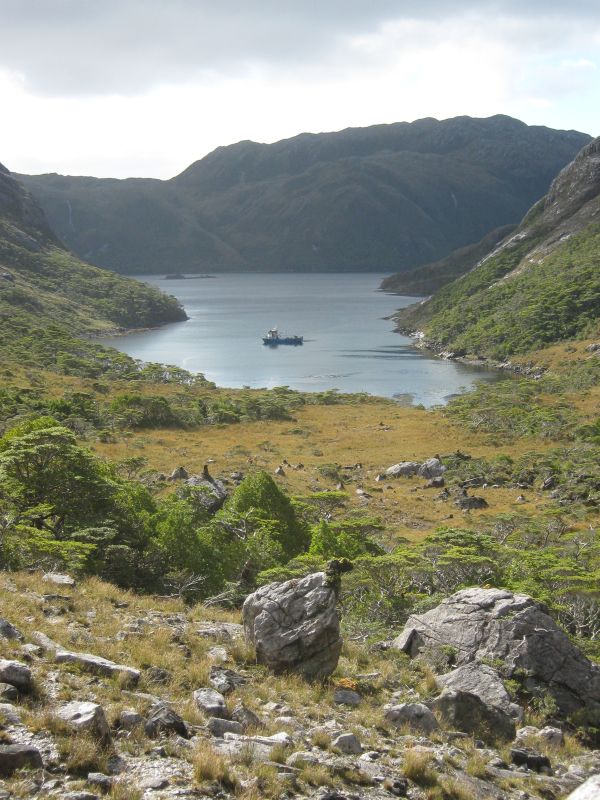 Yesterday was a busy day and I didn’t finish working on my specimens until 10:30 p.m., at which time I just wanted to hit my bunk, not my notebook! The day before yesterday we worked in a beautiful wet forest and we all collected lots of specimens, almost all of which were saturated with water. Not surprisingly, we’re baling in more collections than our drying system can handle, especially with five bryologists in the field. Most collections take about two days to dry on the lowest rack and longer on the upper shelves. At this point we all have wet specimens awaiting dryer space. And it certainly didn’t help that I made almost 100 collections yesterday.
Yesterday was a busy day and I didn’t finish working on my specimens until 10:30 p.m., at which time I just wanted to hit my bunk, not my notebook! The day before yesterday we worked in a beautiful wet forest and we all collected lots of specimens, almost all of which were saturated with water. Not surprisingly, we’re baling in more collections than our drying system can handle, especially with five bryologists in the field. Most collections take about two days to dry on the lowest rack and longer on the upper shelves. At this point we all have wet specimens awaiting dryer space. And it certainly didn’t help that I made almost 100 collections yesterday.
After awhile I am sure that all these places are starting to sound the same to you, especially since you are not here. 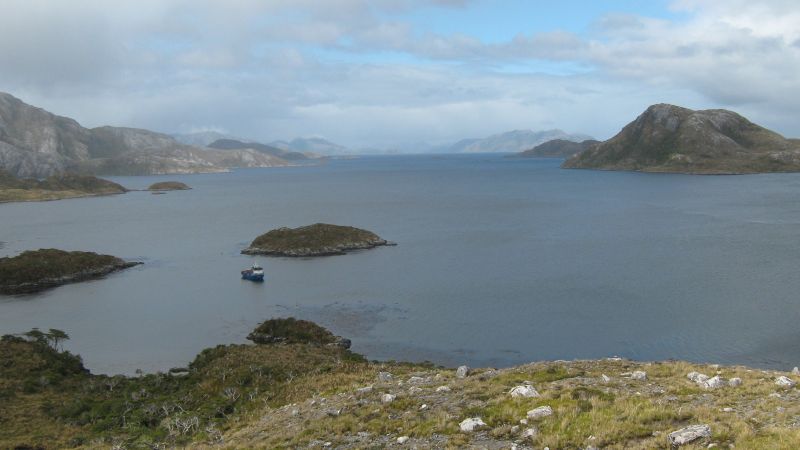 Quite honestly, at this point, many of our sites are even beginning to merge in my mind. I can distinctly remember the moment when I collected a moss and what the microhabitat looked like, but on which island or in which sound I found it is another story entirely. I assume that this will only get worse in the upcoming days because we are now hitting various sounds that go into the southern shore of Isla Grande (i.e., the large island) of Tierra del Fuego.
Quite honestly, at this point, many of our sites are even beginning to merge in my mind. I can distinctly remember the moment when I collected a moss and what the microhabitat looked like, but on which island or in which sound I found it is another story entirely. I assume that this will only get worse in the upcoming days because we are now hitting various sounds that go into the southern shore of Isla Grande (i.e., the large island) of Tierra del Fuego.
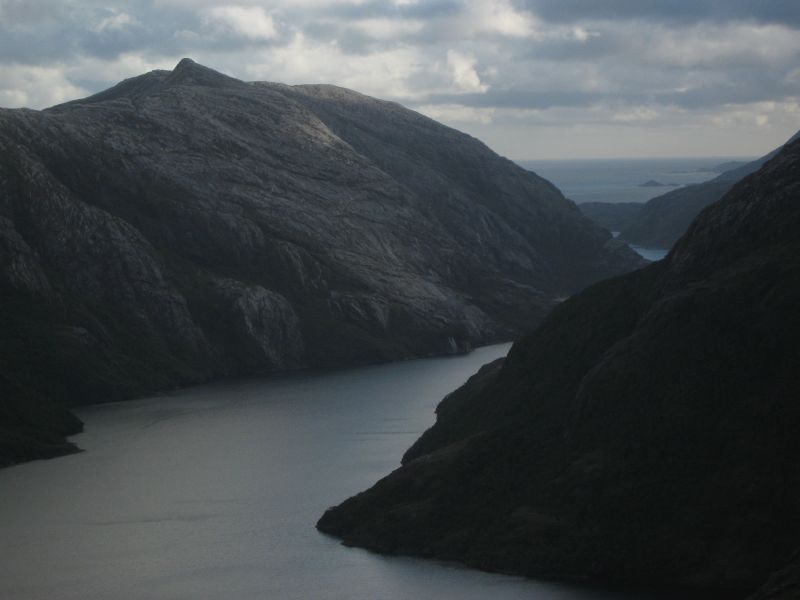 Yesterday afternoon we stopped at our final two small islands. We anchored in the canal separating Isla Brecknock from Isla Macías. The last time we divided our group between two islands Jim felt he got the less interesting island and so this time I let him pick first. He and Matt chose Isla Brecknock because it is the larger of the two islands and had a nice waterfall descending near where we were. Blanka, Kimmy, and I took Isla Macías.
Yesterday afternoon we stopped at our final two small islands. We anchored in the canal separating Isla Brecknock from Isla Macías. The last time we divided our group between two islands Jim felt he got the less interesting island and so this time I let him pick first. He and Matt chose Isla Brecknock because it is the larger of the two islands and had a nice waterfall descending near where we were. Blanka, Kimmy, and I took Isla Macías.
Get a lesson on how to move through a fairy tale forest below.
Posted in Photography on February 12 2011, by Plant Talk
As if M.C. Escher were in the Conservatory.
The Conservatory (photo by Ivo M. Vermeulen)
Posted in Bill Buck, From the Field, Science on February 11 2011, by William R. Buck
Ed. note: NYBG scientist and Mary Flagler Cary Curator of Botany, Bill Buck is currently on expedition to the islands off Cape Horn, the southernmost point in South America, to study mosses and lichens. Follow his journeys on Plant Talk.
February 2, 2011; Seno Courtenay, northern arm, 54°30’S, 71°20’W
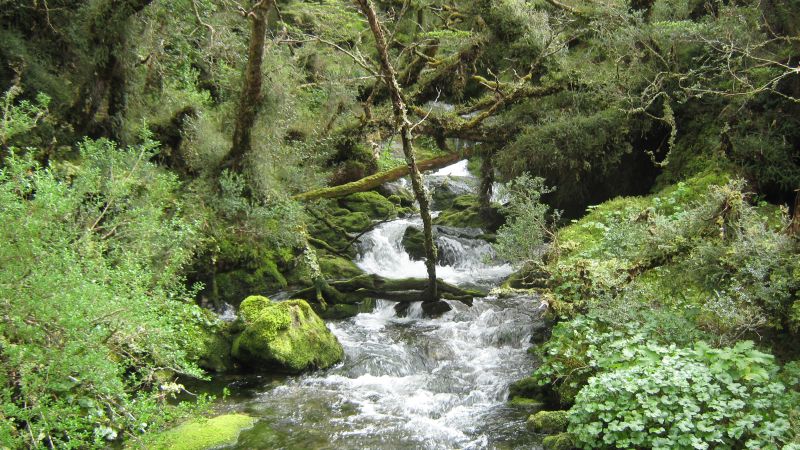 With today came the realization that the days are racing by. Initially it seemed like we had lots of time, but now the calendar is creeping up on us. We have today and the next three days before we head back to Punta Arenas (about a 17 hour trip).
With today came the realization that the days are racing by. Initially it seemed like we had lots of time, but now the calendar is creeping up on us. We have today and the next three days before we head back to Punta Arenas (about a 17 hour trip).
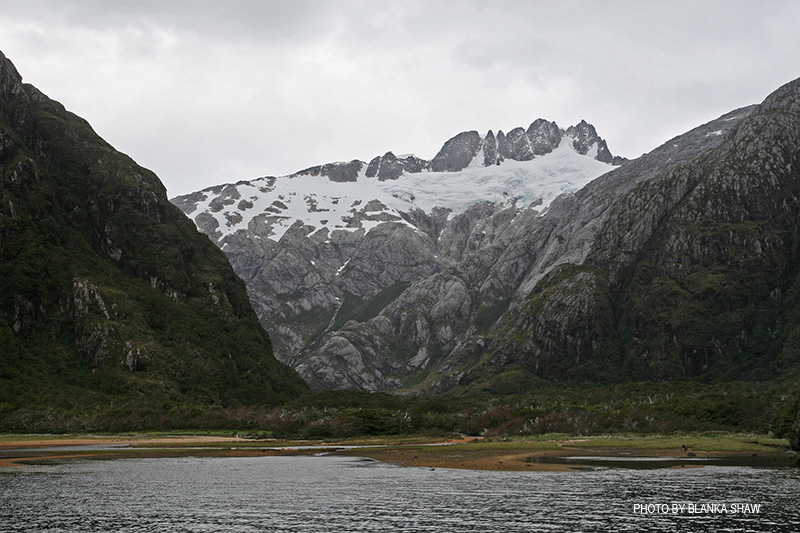 Today was a great collecting day, we all came back delighted with what we had found. Blanka has nicknamed this locality The Enchanted Forest. We are in an eastern arm of Seno Courtenay where several small rivers emerge from what looks like a floodplain forest. There is supposedly a glacier-fed lake upriver, but not one of us has made it that far! At the beginning of the morning I was disappointed when I entered the forest; it seemed like it contained only the standard mosses I have become used to seeing.
Today was a great collecting day, we all came back delighted with what we had found. Blanka has nicknamed this locality The Enchanted Forest. We are in an eastern arm of Seno Courtenay where several small rivers emerge from what looks like a floodplain forest. There is supposedly a glacier-fed lake upriver, but not one of us has made it that far! At the beginning of the morning I was disappointed when I entered the forest; it seemed like it contained only the standard mosses I have become used to seeing. 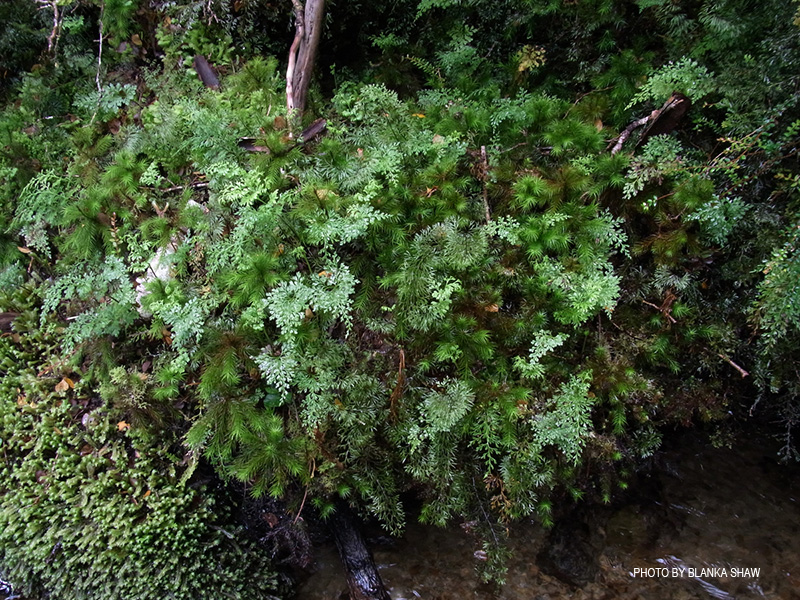 However, as I worked through the forest, the humidity increased as did the number and biomass of epiphytes. The trunks and branches of most trees were sheathed in bryophytes, and even twig epiphytes increased in diversity.
However, as I worked through the forest, the humidity increased as did the number and biomass of epiphytes. The trunks and branches of most trees were sheathed in bryophytes, and even twig epiphytes increased in diversity.
Posted in Photography on February 11 2011, by Plant Talk
Bamboo, that is, in the Conservatory where it’s easy to forget about winter. At least for a little while!
(photo by Ivo M. Vermeulen)
Posted in Bill Buck, From the Field, Science on February 10 2011, by William R. Buck
Ed. note: NYBG scientist and Mary Flagler Cary Curator of Botany, Bill Buck is currently on expedition to the islands off Cape Horn, the southernmost point in South America, to study mosses and lichens. Follow his journeys on Plant Talk.
February 1, 2011; Seno Courtenay, 54°37’S, 71°21’W
 The ship engines started about 6:30 a.m. By this point in our journey, this rouses no one from their bunks except the crew. However, as soon as the engines are cut off it means we have arrived at our next field site and everyone hurries up to breakfast. Every morning for breakfast there is fresh bread, sometimes baked, sometimes fried. It’s a great way to start the day.
The ship engines started about 6:30 a.m. By this point in our journey, this rouses no one from their bunks except the crew. However, as soon as the engines are cut off it means we have arrived at our next field site and everyone hurries up to breakfast. Every morning for breakfast there is fresh bread, sometimes baked, sometimes fried. It’s a great way to start the day.
 Mornings are mostly proving to have reasonable weather, but usually by 1-2 p.m. it starts to rain harder and the winds pick up. This morning we arrived in Bahía Murray on the east side of Isla Basket. The island is named for Fuegia Basket, the name Charles Darwin’s expedition gave to an indigenous young woman that they essentially kidnapped and took to England to “civilize.” The weather–just light continuous drizzle–was not an issue, and we all went ashore to collect. We split into a few groups to cover more habitats. Juan decided to try and reach a peak that rises to about 1600-1700 feet and took our satellite modem with him in an attempt to send out my daily blogs. He got within 50 feet of the summit but couldn’t continue because the rocks were steep and crumbling. Needless to say, the modem still couldn’t find a satellite.
Mornings are mostly proving to have reasonable weather, but usually by 1-2 p.m. it starts to rain harder and the winds pick up. This morning we arrived in Bahía Murray on the east side of Isla Basket. The island is named for Fuegia Basket, the name Charles Darwin’s expedition gave to an indigenous young woman that they essentially kidnapped and took to England to “civilize.” The weather–just light continuous drizzle–was not an issue, and we all went ashore to collect. We split into a few groups to cover more habitats. Juan decided to try and reach a peak that rises to about 1600-1700 feet and took our satellite modem with him in an attempt to send out my daily blogs. He got within 50 feet of the summit but couldn’t continue because the rocks were steep and crumbling. Needless to say, the modem still couldn’t find a satellite.
Posted in Learning Experiences, Programs and Events on February 10 2011, by Plant Talk
| Travis Beck, Landscape and Gardens Project Manager, The New York Botanical Garden |
 Every time I’ve spoken to a landscape architect or nursery grower about taking an ecological approach to landscape design–something I’ve been doing a lot throughout the planning and development of the Garden‘s new Native Plant Garden–I keep hearing the same phrase repeated over and over: “You should talk to Colston Burrell.”
Every time I’ve spoken to a landscape architect or nursery grower about taking an ecological approach to landscape design–something I’ve been doing a lot throughout the planning and development of the Garden‘s new Native Plant Garden–I keep hearing the same phrase repeated over and over: “You should talk to Colston Burrell.”
Up until this point I’ve known Burrell mostly through his writing. Of recent note is his American Horticultural Society (AHS) award-winning Hellebores: A Comprehensive Guide. This is the time of year when I really start looking forward to the blooming of the Lenten Rose and other garden hellebores, but Burrell’s knowledge goes far beyond the mere beauty of these harbingers of spring. Another book of his that won an AHS book award is A Gardener’s Encyclopedia of Wildflowers. Wildflowers . . . Now isn’t that just a friendly term for native plants? Burrell is deeply involved with using and promoting native plants, whether he’s lecturing on plants and ecology at the University of Virginia, getting his hands dirty in his own garden, or working on designs through his firm Native Landscape Design and Restoration.
There are a lot of reasons to use native plants. They’re also commonly misunderstood, both by those who overestimate their powers, and those who underestimate their potential. I’m looking forward to getting a real plantsman’s perspective on how to use native plants in the landscape, the perspective of someone who loves wildflowers and hellebores with equal passion. That’s why I’ll be in the front row on February 17, when Colston Burrell speaks as part of NYBG’s 2011 Winter Lecture Series. I hope to see you there!
Burrell’s lecture is at the Garden in the Ross Lecture Hall on Thursday, February 17, from 10 a.m. – 12 p.m. The cost is $39 for non-members, and $35 for Members. The third and final installment of the series will feature director of The New York Botanical Garden’s Children’s Gardening Program, rooftop farmer, and food advocate Annie Novak on Thursday, March 17.
Posted in Photography on February 10 2011, by Plant Talk
No, not the one that was one of the Seven Wonders of the World. This hanging garden is of a more modest, but nonetheless impressive scale.
The Hanging Baskets House of the Enid A. Haupt Conservatory (photo by Ivo M. Vermeulen)
Posted in Bill Buck, From the Field, Science on February 9 2011, by William R. Buck
Ed. note: NYBG scientist and Mary Flagler Cary Curator of Botany, Bill Buck is currently on expedition to the islands off Cape Horn, the southernmost point in South America, to study mosses and lichens. Follow his journeys on Plant Talk.
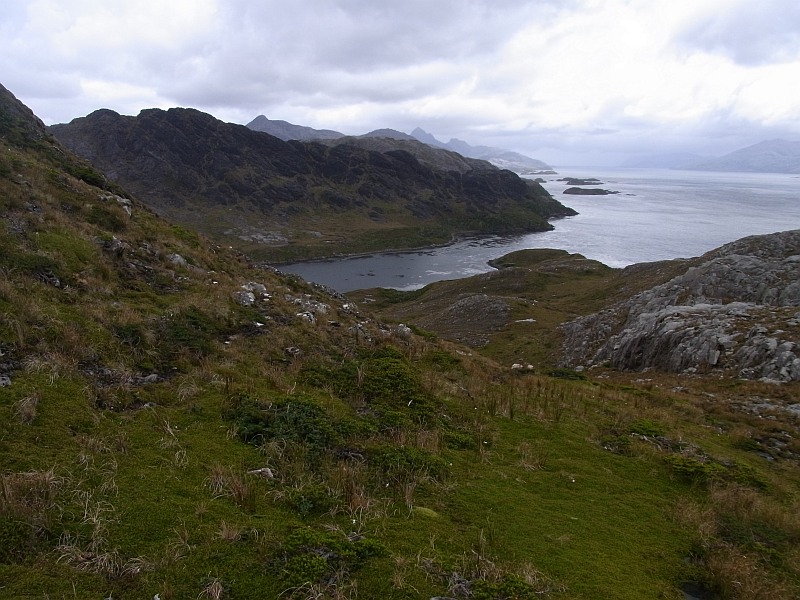 January 31, 2011; canal between Isla Georgiana and Isla Clementina, 54°41’S, 71°45’W
January 31, 2011; canal between Isla Georgiana and Isla Clementina, 54°41’S, 71°45’W
The engines started early and we only traveled about 1 1/2 hours before they stopped again. Because of the short time I assumed that we must have just headed north to the Brecknock Peninsula. However, much to my delight we were actually in a small sound on the northwest side of Isla Sidney. The gods must have been smiling on us, because for one of these barrier islands, the weather was great. The sun came and went, and only an occasional shower passed. This was particularly surprising because as we were getting into our rain gear before leaving the ship it had been sleeting.
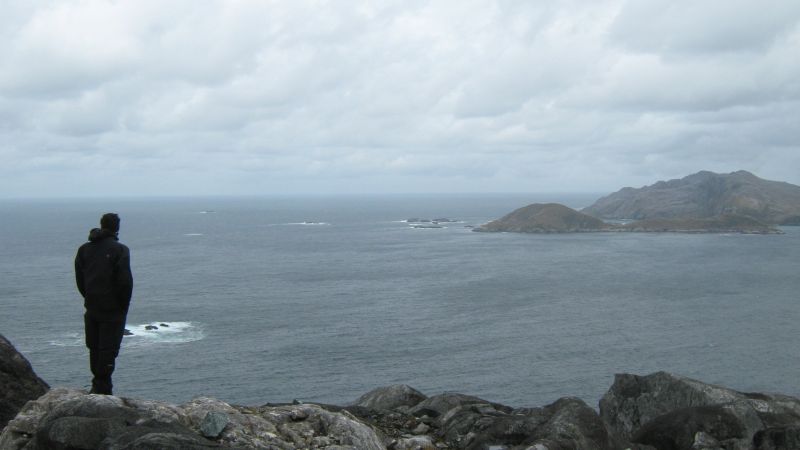 We split into three groups and headed off in different directions. I went alone to a beautiful southern beech gallery forest along a small, rocky steam. As I worked up the stream it eventually opened up and the rocks in the stream changed from being liverwort-covered in the shade, to moss-covered in the sun. As much as I am enjoying the company of my colleagues, it was nice to be alone for a few hours, especially in such a beautiful place. When we returned to our pick-up point in the early afternoon, everyone was very pleased both with what they had found, as well as with the weather (especially after the previous day).
We split into three groups and headed off in different directions. I went alone to a beautiful southern beech gallery forest along a small, rocky steam. As I worked up the stream it eventually opened up and the rocks in the stream changed from being liverwort-covered in the shade, to moss-covered in the sun. As much as I am enjoying the company of my colleagues, it was nice to be alone for a few hours, especially in such a beautiful place. When we returned to our pick-up point in the early afternoon, everyone was very pleased both with what they had found, as well as with the weather (especially after the previous day).
Posted in Photography on February 9 2011, by Plant Talk
Like a chorus of laughing faces, the Arpophyllum spicatum, is covered in miniscule, nearly-neon pink flowers.
Arpophyllum spicatum in the Conservatory (photo by Ivo M. Vermeulen)